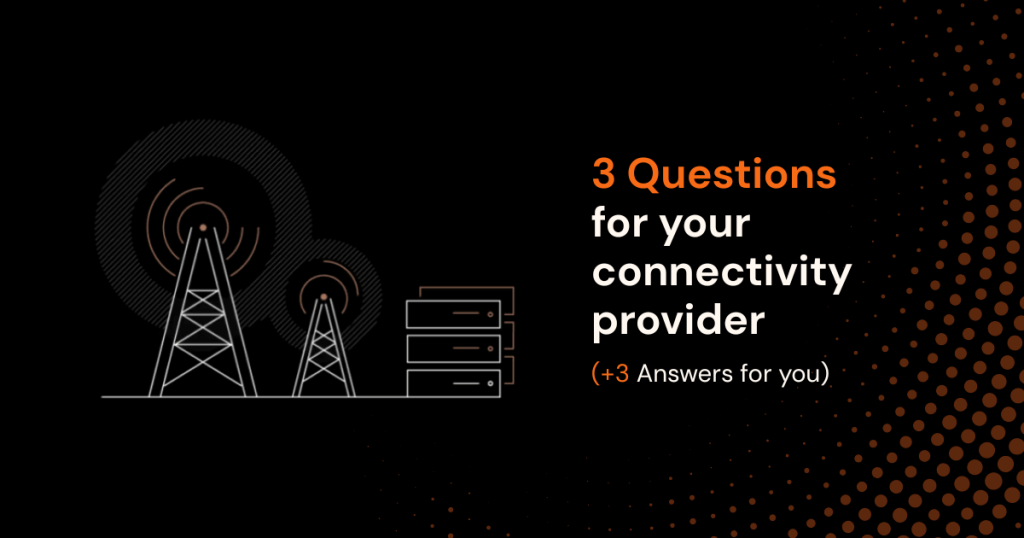The rapid growth of IoT has brought about a new era of connected devices, transforming industries and enabling data-driven product development. However, many organizations are facing the challenge of managing the total cost of ownership (TCO) associated with cellular devices.
In our recent panel discussion, we invited experts to discuss TCO and strategies to minimize IoT costs while maximizing efficiency.
The panel consisted of Lars Theobaldt, Managing Partner at Detecon, Niclas Granholm, IoT Connectivity Manager at Scania, and moderator Jacob Jagger, Senior Sales Engineer at Onomondo. This article is a summary of the discussion from that webinar. Watch the webinar replay via this link.
Table of Contents
Understanding IoT cost drivers
Before diving into tactics for minimizing TCO, we need to start with understanding the major cost drivers. Jacob shared insights from Onomondo, stating that hardware and connectivity typically contribute to the majority of the IoT costs, including costs for battery, microcontroller, SIM subscriptions, and data plans.

When asked about how this resonates with our panelists, Niclas shared his learnings from managing a large fleet of vehicles at Scania, where connectivity constitutes a significant portion of the TCO due to the sheer number of vehicles and their long lifespans. Other factors such as investments in proprietary hardware, technology choices, software and firmware updates, and data consumption also affect overall costs. Additionally, he emphasized the costs associated with predicting and keeping up with technological advancements for a fleet spread across 115 countries.
Lars agreed but stated that IoT cost drivers may vary depending on the application and deployment, stressing the need for a tailored approach. He mentioned that managing connectivity in-house can be costly for companies and may not always be necessary. While some companies consider connectivity as part of their core competence, others may decide to outsource it, particularly for less critical applications. Lars mentioned that managing IoT devices involves not only deployment and management, but also retiring devices and handling incidents, which requires skilled personnel.
Tactics for minimizing costs of IoT devices
Improving device lifespan
The panelists continued discussing strategies for improving TCO including extending the device lifespan.
Niclas explained how Scania has extended the lifespan of their devices by one to two years by closely measuring network degradation, specifically concerning the ongoing 2G sunset, and utilizing operators that maintain reliable networks. However, he acknowledged that end-of-life considerations become necessary at some point, mainly due to the difficulty of software updates for older devices.
Lars brought up the shift towards becoming more data-driven, especially for the truck manufacturing industry. He explains that while discussions often focus on topics like mesh networks, time synchronization, and wireless strategies to optimize battery life, the aspect of data structures is sometimes overlooked.
There’s a big value in lean data structures and acquiring the right information at the right time, rather than just collecting vast amounts of data and getting stuck with big data lakes. He believes that having a clear network strategy, and efficient data structures are key for improving device lifetime.
Minimizing data overheads
Another crucial aspect discussed during the webinar was the significant data overheads associated with transmitting device data to cloud platforms. Jacob highlighted the challenge with determining the essential data to transmit versus unnecessary or excess data. He pointed out that current logic is most often built in on the device, resulting in potential data loss and increased TCO due to additional overheads like TLS, TCP, and certificate exchange.
“There is a lot of potential data loss from a TCO perspective, when all of the logic is on the device. However, we have creative ways to move that logic to the network. Encryption still takes place, while reducing data transmission.” explained Jacob. Learn more about this technology here.
Niclas shared that at Scania, vehicles have been built on an extremely lean protocol to stay offline for quite some time and still function, and with very few hardware changes. This decision came from a time when data was even more costly. However, this setup has enabled them to lower their TCO, as the devices don’t always need to be transmitted immediately.
The role of connectivity in TCO
The discussion continued around the role of connectivity in optimizing device lifetime and reducing TCO. Jacob questioned the panelists about the importance of connectivity in their respective domains, and which choices they have made that affect the TCO.
Niclas shared that Scania is currently building their own mobile telecom platform, as they want more control and to be able to make better use of the data they collect. He continued explaining that Scania is working on a solution to swap profiles on the SIM while in transit, a process that is not common in the industry, but is expected to give better control of the networking signaling quality.
To understand more about the considerations on eUICC/UICC for remote provisioning, we recommend this article.
Lars explains that the industry is actively working on professional over-the-air (OTA) updates and creating digital twins, which can be used for truck performance monitoring. This development can help with gathering data and providing insights to various stakeholders. There are emerging IoT cost elements and new forms of connectivity, like network function enabling and network slicing, that are being defined. Lars asks Niclas if he has noticed similar trends in his role.
Niclas agrees and points out that they are in a unique position as they own quite a lot of the data, and that the connectivity is crucial to deliver proper services to their customers.
Especially when it comes to predictive maintenance, as every minute a truck is off the road means lost revenue for Scania. Stable and reliable connectivity is the driving force behind efficient troubleshooting, service and maintenance. However, Niclas explained that data loss is rare, as their units are designed to be offline for extended periods and buffer the data until connectivity is restored.





